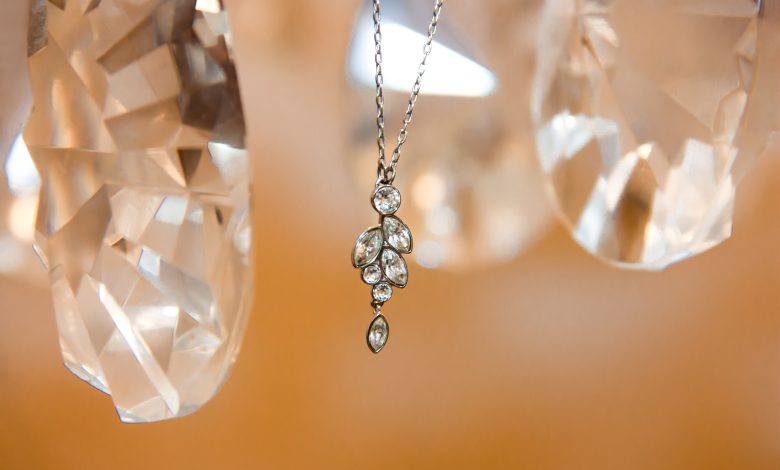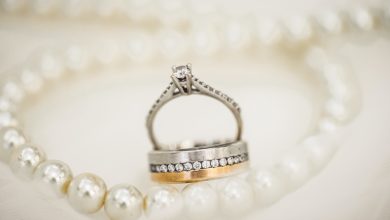
Insuring your valuable personal property may be more important than you think. There is no indication of future events in life, and you never know when your insurance policy could save you from a huge headache.
In the past, insurance options weren’t as comprehensive as they are now. That makes sense since such an industry only gets the chance to evolve based on occurrences that are significant enough to warrant a change.
Getting your valuables insured is necessary because your homeowner’s policy may not be as far-reaching as you think. It is not wrong for you to think that personal property is covered in such a policy. However, the amount of coverage that is offered may not be enough.
Insurance is recommended for jewelry where applicable. Of course, this all depends on the amount of jewelry you own, as well as how much of it is considered precious to you. What’s the point of insuring a single $150 watch? Your homeowner’s policy can cover that, right? Even if it doesn’t, replacing such an item is a non-issue in the grand scheme of things.
On the topic of your homeowner’s policy, do you know what the coverage limit for jewelry is? Does it even have one? Take USAA’s insurance, for example. It provides $10,000 of coverage for jewelry in its homeowner’s policy.
That figure can probably work for you, but there’s an amount you need to pay before that coverage is even accessible (your policy deductible). Additionally, that figure you get is a total coverage limit. You don’t get a per-item limit, which may not be convenient for you. If you have a huge jewelry collection, this coverage may not be appropriate.
The concept of insurance for valuables always attracts numerous questions. Prepare to have all your concerns about jewelry insurance addressed, as some of the most frequently asked questions are addressed below.
How Does Jewelry Insurance Work?
Creating a policy for your jewelry is much like creating any other insurance policy. The benefit, though, is that it is a special-purpose policy. This means that it goes way beyond the offerings of a homeowner’s policy, and you can do per-item insurance.
When you want to buy insurance for a piece of jewelry, an appraisal must be done. This illustrates the value of the item, which helps with generating your quote. Once you get the quote, you are free to purchase it and get the ball rolling on your policy.
Before you set things in motion, read the fine print, and get clarification on every detail of your policy. Things can get messy if you try to make a claim for something that isn’t covered by your policy. It’s also a great idea to find out about any promotions or discounts that are in effect.

Choosing a Jewelry Insurance Policy
There are many features that a policy can have. The recommendations for listed items fall into the categories of undebatable items, needs, and perks. These categories refer to how important the items are.
You shouldn’t buy a policy that doesn’t feature undebatable items, but you can gloss over missing perks. You should also try your best to get a policy that covers needs.
Undebatable Items:
- Single item limit
- Valuables in total
- Outbuilding theft
- Personal liability
Needs:
- Increase during special events
- Personal possessions (outside the home)
- Repair guarantee
- Legal expenses
- Accidental damage
- Sum insured protection
- Emergency helpline
Perks:
- Business equipment
Asking the right questions is a non-negotiable requirement to ensure that you understand all conditions and their implications for you. Are you having trouble deciding what to ask? Here are some suggestions:
- How often should appraisals be submitted?
- What proof of damage or loss is required?
- What kind of scenarios are not covered by the policy?
- Are coverage limits for precious gems based on the cost of said gems?
- Does the policy cover the full cost of the item?
- What is the average wait time for claim processing?
Blanket Policy Superior vs Single Item Policy
There is no hard and fast rule that you should use to decide which one to get. It boils down to evaluating your unique situation and choosing the policy that best meets your needs. Consider the following two situations.
First, imagine that you have three pieces of jewelry. Two of these are inexpensive articles of fashion jewelry, and one is a diamond ring. The ring would be the only thing that needs to be insured. Therefore, it would be best to take out a single item policy.
In the second scenario, imagine that you have many pieces of jewelry with varying amounts of value. Also, imagine that your very expensive wedding ring is a part of your collection. In such a situation, you could take out two different policies. The value of the ring may cause it to exceed the provision for a blanket policy when you consider the other items to be insured.
A good idea would be to take out two policies. The single item policy can be used for the ring, while you can use a blanket policy to cover the other items. You may be opposed to purchasing two policies, but if your situation calls for it, then you should do what’s best to protect your valuables.
Jewelry Insurance Claim Process
When you register an insurance policy, it remains in what can be considered a dormant state. You are required to make your interval payments for as long as the policy is in effect.
You could go through your entire life without ever needing to contact your insurance provider. If you do, however, a claim needs to be made. Depending on the provider you go with, this process could be simple, complex, or somewhere in between.
The process of making a jewelry insurance claim is like that of making a motor vehicle insurance claim. There’s a claim submission, an investigation, and an action.
Once you initiate the process, you are usually given a claim number that is used for reference. You need to provide all the information and evidence you can for the best results. If applicable, ensure that you’ve filed a police report prior to making a claim, as the documentation the police station provides is an asset to your claim. You should also provide any photos or other documents you may have on the piece(s). Documentation that establishes the value is important and so is a certification report if there are any diamonds involved.
Once you provide all the information, you simply wait for the process to run its course, after which you are advised on the decision taken and the next steps.
Frequently Asked Questions About Jewelry Insurance

What Does Insurance Excess Mean?
You probably see the word excess thrown around in insurance a lot. This is simply a measure of payment that is required of you in the event of a claim. Some policies don’t have a statement of excess, while others have very exorbitant rates. Always get all the information that’s available on the excess.
Note that a single policy can speak to multiple kinds of excess. For example, there is accidental damage access. If you make a claim based on your accidental damage allocation, you may be required to make an excess payment. However, a good policy doesn’t require any excess for this kind of claim.
Is Travelers Insurance Needed to Cover Jewelry While Abroad?
The answer to this depends on the specifics laid out by your policy. Note that a good comprehensive insurance policy makes no distinction based on where an incident happened. Therefore, if you lose a piece of jewelry at home, the coverage should be the same as if you lost it halfway across the world.
Always remember to inspect your policy and put in the utmost effort to understand all the clauses.
Do You Need Insurance for Jewelry That Is Under Warranty?
Even if your jewelry is under warranty, getting insurance for it is recommended. A warranty is not insurance, and it has a different purpose. The point of a warranty is to ensure that a customer is satisfied with a product. Therefore, if there are any faults arising from the manufacturing process, you can get a replacement or repair.
There is also the matter of all the restrictions that come with warranties. It’s not unlikely for your warranty to become void because of something simple that was out of your control.
Don’t forget that most warranties expire too. In fact, getting a lifetime warranty on a piece of jewelry is very unlikely.
What Should You Do If You Found an Item That You Had Submitted a Claim For?
This happens with many things that aren’t even jewelry. Thinking something is lost and seeing it show up is usually a welcome surprise. However, that surprise can quickly turn to panic when you realize that this is a piece of jewelry that you made an insurance claim for. Of course, if the said claim was approved and taken care of by your insurance provider, things are even stranger.
There’s no need to fear though, as a little honesty is all it takes to make this situation right. You should make it a priority to contact your insurance provider immediately if this happens to you. Once you do, you can expect to be advised on how to proceed.
The scenario usually ends with your providing something of value to the insurance company. This could be cash or a piece of jewelry that was purchased to replace the one you thought was lost.
Of course, this is a question of morality, since you could choose to keep everything. Doing so is not only highly immoral, but it is also a bad idea legally.
You may not think much of it, but withholding the information is a criminal offense. Have you ever heard of the term insurance fraud? You don’t want to be one of those people who end up in a jail cell for something that is so easily avoidable.



